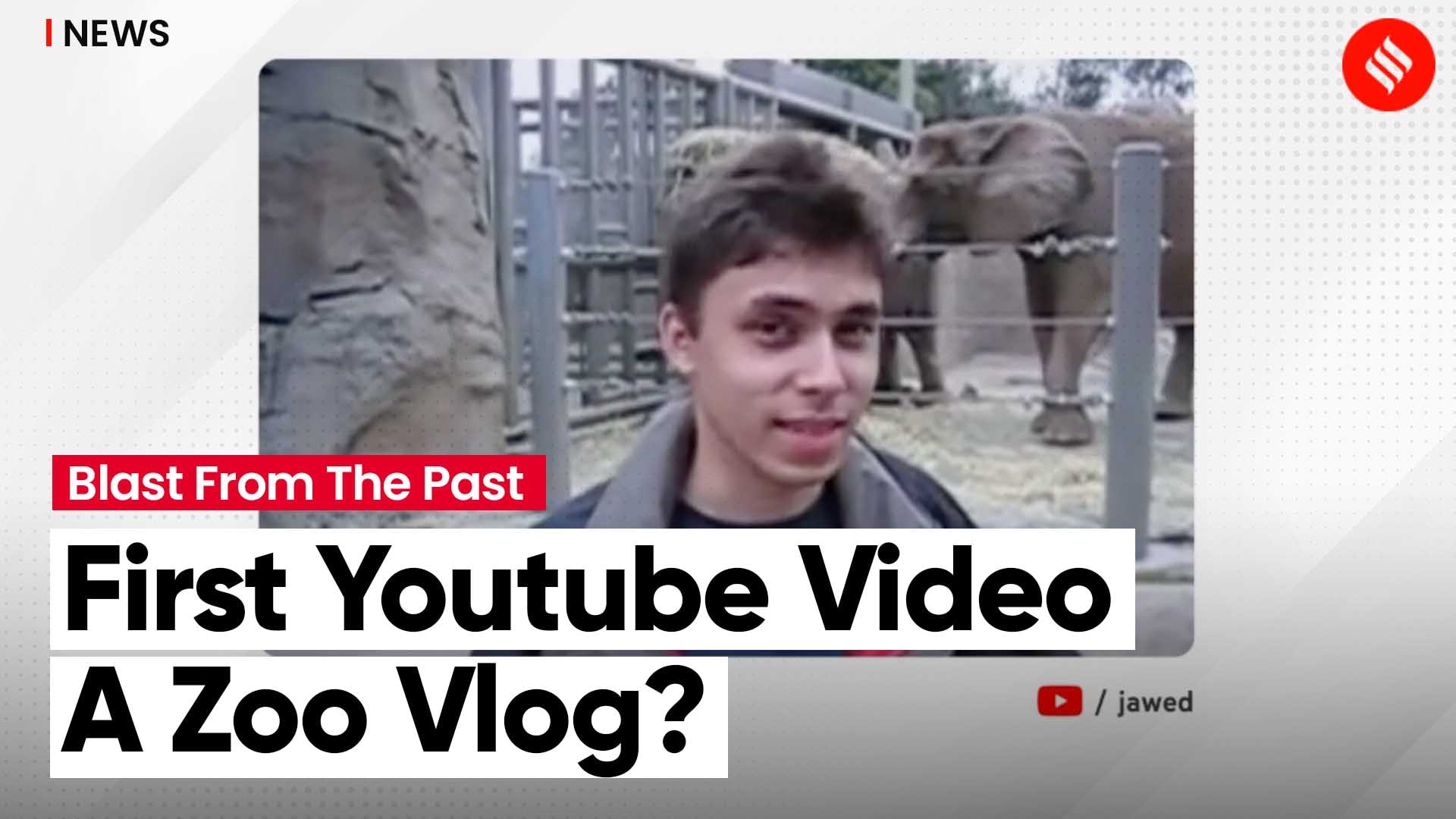Whether it’s for entertainment, education, or marketing, videos dominate our screens and influence how we perceive the world. From short-form TikTok clips to feature-length documentaries, the versatility of videos is unmatched. They not only capture attention but also evoke emotions and drive engagement in ways that text or images alone cannot. This makes videos a powerful tool for storytellers, businesses, and educators alike. The evolution of technology has made video creation and consumption more accessible than ever before. With smartphones equipped with high-quality cameras and platforms like YouTube, Instagram, and Vimeo, anyone can create and share videos. This democratization of video content has transformed how we communicate and consume information. From live streams to tutorials, videos are now a primary medium for sharing knowledge and connecting with audiences globally. But what makes videos so effective, and how can you leverage their potential? In this comprehensive guide, we’ll delve into the world of videos, exploring their history, types, and impact. You’ll also discover practical tips for creating engaging videos, optimizing them for search engines, and using them to achieve your goals. Whether you’re a content creator, marketer, or simply a video enthusiast, this article will equip you with the tools and insights you need to succeed.
Table of Contents
- What Makes Videos So Powerful?
- How Did Videos Evolve Over Time?
- Types of Videos You Should Know
- How to Create Engaging Videos?
- What Are the Best Tools for Video Editing?
- How Can Videos Boost Your Marketing Efforts?
- Why Are Videos Important for SEO?
- FAQs About Videos
What Makes Videos So Powerful?
Videos are a unique medium that combines visual, auditory, and sometimes even interactive elements to deliver a message. This multi-sensory experience makes them highly engaging and memorable. Studies have shown that people retain 95% of a message when they watch it in a video, compared to just 10% when reading it in text. This is one of the reasons why videos are so effective in capturing attention and conveying complex ideas quickly.
One of the key strengths of videos is their ability to evoke emotions. Whether it’s a heartwarming story, a funny skit, or an inspiring speech, videos can create a strong emotional connection with the audience. This emotional engagement often leads to higher levels of trust and loyalty, which is why businesses and brands use videos extensively in their marketing strategies.
Read also:What Is Shoeonhead And Why Should You Care
Additionally, videos are highly versatile. They can be used for a wide range of purposes, from entertainment and education to product demonstrations and customer testimonials. This versatility makes videos a valuable asset for anyone looking to communicate effectively and reach a broader audience.
Why Are Videos More Effective Than Other Media?
Compared to text or images, videos offer a richer and more immersive experience. They allow creators to tell stories in a dynamic way, using visuals, sound, and motion to convey their message. This combination of elements makes videos more engaging and easier to consume, especially for audiences with short attention spans.
Another reason why videos are more effective is their shareability. Platforms like YouTube, Facebook, and TikTok have made it easy for users to share videos with their networks. This viral potential can significantly amplify the reach of your content, making videos a powerful tool for brand awareness and audience engagement.
How Did Videos Evolve Over Time?
The history of videos dates back to the late 19th century when the first motion pictures were created. Over the years, technological advancements have transformed the way videos are produced, distributed, and consumed. From silent black-and-white films to high-definition streaming, the evolution of videos has been nothing short of remarkable.
In the early days, videos were primarily used for entertainment purposes. The invention of the film camera and the rise of Hollywood marked the beginning of a new era in storytelling. As technology improved, videos became more accessible, leading to the development of television and home video formats like VHS and DVD.
Fast forward to the 21st century, and the rise of the internet has revolutionized the video industry. Platforms like YouTube and Vimeo have made it possible for anyone to upload and share videos with a global audience. The advent of smartphones and social media has further accelerated this trend, making videos an integral part of our daily lives.
Read also:Faith Ordways Inspiring Journey A Deep Dive Into Her Life And Achievements
What Role Did Technology Play in the Evolution of Videos?
Technology has been a driving force behind the evolution of videos. From the invention of the film camera to the development of digital editing software, technological advancements have continually pushed the boundaries of what’s possible in video production.
One of the most significant technological breakthroughs was the transition from analog to digital formats. This shift not only improved the quality of videos but also made them easier to edit, store, and distribute. The rise of high-speed internet and mobile devices has further transformed the video landscape, enabling real-time streaming and on-demand content consumption.
Types of Videos You Should Know
Videos come in many forms, each serving a unique purpose. Understanding the different types of videos can help you choose the right format for your needs. Here are some of the most common types of videos:
- Educational Videos: These videos are designed to teach or inform the audience. Examples include tutorials, how-to guides, and explainer videos.
- Entertainment Videos: These videos aim to entertain and engage the audience. Examples include movies, TV shows, and comedy sketches.
- Marketing Videos: These videos are used to promote products, services, or brands. Examples include commercials, product demos, and customer testimonials.
- Social Media Videos: These videos are optimized for platforms like Instagram, TikTok, and YouTube. Examples include short clips, live streams, and vlogs.
- Corporate Videos: These videos are used for internal or external communication within organizations. Examples include training videos, company overviews, and event highlights.
Which Type of Video Should You Choose for Your Goals?
The type of video you choose depends on your objectives and target audience. For instance, if your goal is to educate your audience, an educational video would be the most effective format. On the other hand, if you’re looking to promote a product or service, a marketing video would be more appropriate.
It’s also important to consider the platform where your video will be shared. For example, short-form videos perform better on platforms like TikTok and Instagram Reels, while longer videos are more suitable for YouTube or Vimeo.
How to Create Engaging Videos?
Creating engaging videos requires a combination of creativity, planning, and technical skills. Here are some tips to help you get started:
- Define Your Objective: Before you start filming, clearly define the purpose of your video. Are you trying to educate, entertain, or promote something?
- Know Your Audience: Understanding your target audience is crucial for creating content that resonates with them. Consider their preferences, interests, and pain points.
- Plan Your Content: Create a script or storyboard to outline the key points you want to cover in your video. This will help you stay organized and focused during the production process.
- Invest in Quality Equipment: While you don’t need expensive gear to create great videos, investing in a good camera, microphone, and lighting can significantly improve the quality of your content.
- Edit Your Video: Post-production is where the magic happens. Use video editing software to trim clips, add transitions, and incorporate music or sound effects.
What Are Some Common Mistakes to Avoid When Creating Videos?
Even experienced creators can make mistakes when producing videos. Here are some common pitfalls to avoid:
- Poor Audio Quality: Bad audio can ruin even the most visually appealing video. Make sure to use a good microphone and record in a quiet environment.
- Overloading with Information: Keep your message concise and focused. Overloading your video with too much information can overwhelm your audience.
- Ignoring SEO: Optimizing your video for search engines is essential for increasing its visibility. Use relevant keywords in your title, description, and tags.
What Are the Best Tools for Video Editing?
Choosing the right video editing software can make a big difference in the quality of your videos. Here are some of the best tools available:
- Adobe Premiere Pro: A professional-grade video editing software used by filmmakers and content creators.
- Final Cut Pro: A popular choice for Mac users, offering advanced features and a user-friendly interface.
- iMovie: A free and easy-to-use video editor for beginners.
- DaVinci Resolve: A powerful tool for color correction and audio editing.
- Canva: A web-based platform with simple video editing features for social media content.
Which Tool is Right for You?
The best tool for you depends on your skill level and budget. If you’re a beginner, free tools like iMovie or Canva are great options. For more advanced users, Adobe Premiere Pro or Final Cut Pro offer a wide range of features to bring your creative vision to life.
How Can Videos Boost Your Marketing Efforts?
Videos are a powerful tool for marketers, helping businesses connect with their audience and drive conversions. Here’s how videos can enhance your marketing strategy:
- Increased Engagement: Videos capture attention and keep viewers engaged longer than other types of content.
- Improved SEO: Including videos on your website can improve your search engine rankings and increase organic traffic.
- Higher Conversion Rates: Studies show that videos can increase conversion rates by up to 80%.
- Enhanced Social Media Presence: Videos are more likely to be shared on social media, increasing your brand’s visibility.
How Can You Measure the Success of Your Video Marketing Campaigns?
To measure the success of your video marketing efforts, track key metrics such as views, engagement, click-through rates, and conversions. Tools like Google Analytics and YouTube Analytics can provide valuable insights into your video’s performance.
Why Are Videos Important for SEO?
Videos play a crucial role in search engine optimization (SEO). They can improve your website’s visibility, increase dwell time, and reduce bounce rates. Search engines like Google prioritize websites with engaging multimedia content, making videos an essential part of any SEO strategy.
Including videos on your landing pages can also boost your chances of ranking higher in search results. According to research, pages with videos are 53 times more likely to appear on the first page of Google.
FAQs About Videos
How Long Should a Marketing Video Be?
The ideal length of a marketing video depends on the platform and audience. For social media, shorter videos (30-60 seconds) tend to perform better, while longer videos (2-5 minutes) are more suitable for YouTube or websites.
Do I Need Professional Equipment to Create Videos?
No, you don’t need professional equipment to create great videos. Many successful creators use smartphones and affordable accessories like tripods and microphones to produce high-quality content.
How Can I Optimize My Videos for Search Engines?
To optimize your videos for search engines, use relevant keywords in your title, description, and tags. Additionally, create a compelling thumbnail and include a transcript or captions to improve accessibility.
Conclusion
Videos are a dynamic and versatile medium that can transform the way you communicate and connect with your audience. By understanding the power of videos and learning how to create engaging content, you can unlock new opportunities for growth and success. Whether you’re a marketer, educator, or content

